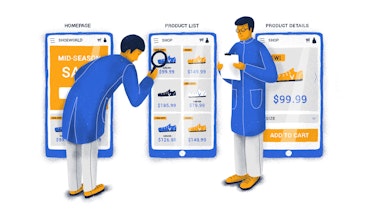Technology has revolutionized every aspect of our lives, and classrooms are no different. They are definitely far better, more modernized, and more advanced than what they used to be 10 years ago.
If this study from PeW is to be believed, 92% of teachers believe that the internet has impacted their ability to access content, resources, and materials — positively.
Despite what you may think, however, technology in education today is no longer limited to digital whiteboards, learning management systems, iPads, and the like. It is now so much more than that!
With this in mind, let’s explore the various ways technology has benefited the education industry.
What is meant by EdTech?
For starters, education technology, or EdTech, is an area of technology that is dedicated solely to the development and application of tools that aim to promote education.
Undoubtedly, there is a growing need for EdTech startups that can help teachers and students make the most out of technology. This is perhaps the reason that the investments made to EdTech companies crossed $16.34 billion in 2018. Countries like China and the U.S. are leading the way, quickly followed by India and Israel.
It is worth mentioning that Pearson, a U.K. education conglomerate, recently allocated a budget of $50 million to fund next-generation EdTech startups.
The benefits for society and industry are fascinating, and this is why our agency provides our best UX innovations to EdTech. We aim to streamline education technology products.
Speaking of which, it is essential to understand what EdTech is and the benefits of technology in education. We’ll discuss seven of them here. Let’s get started.
Benefits of Technology in Education
1. Immersive learning
You probably agree with us that classroom learning is not only about chalkboards and textbooks. The students of today yearn for a more immersive experience, with the curiosity to match: What makes the moon round? What are the specific timelines in history related to climate change in Antarctica? There seems to be no end to all the questions they come up with.
EdTech works with teachers to create augmented reality-based tutorials that can virtually transfer students to the moon, for example, and otherwise help them in learning effortlessly.
2. Gamification
Games can make the entire learning experience much more pleasant. They make a classroom lively and help in instant personification. Various EdTech tools make use of gamification to help students understand tough subjects like math. This boosts participation, encourages engagement and collaboration, and makes way for better context-based learning.
3. Accessible long-distance learning
With busy schedules and hectic jobs, it has become difficult and important to enhance your skill set. This is where EdTech comes in. With virtual lessons slowly replacing traditional lectures, education is more relevant and convenient than ever.
Students can organize their time and learn in a suitable time slot of their choice. They can also undertake subjects and courses that are outside their course curriculum for enhanced knowledge.
4. Personalized education experience
EdTech is not only well received by students, but it also creates a positive environment for teachers. A teacher survey conducted by PBS LearningMedia found that teachers like and support technology in the classroom. This is because access to digital materials supplement the existing classroom learning topics and help teachers introduce new learning methods on the go.
74% of teachers agree that technology helps them in reinforcing the lessons, according to PBS, and 78% of teachers teaching kindergarten through middle school agreed that technology has had a positive impact on their classroom, revealed the Huffington Post.
5. Student preferred
A recent study by Educause found that college students prefer to integrate technology into their curriculum. This is because students are already using computers, tablets, and smartphones at home and they want the same tools to interact with their instructors and other students.
6. A blended learning environment
Education especially benefits from a blended learning environment. It facilitates cost reduction for schools, allows students to have unlimited access to the learning material, supports online submission of electronic documents, etc. In short, technology in education makes learning all the smarter and more convenient.
7. Better engagement
Technology drives better engagement from students and keeps them focused. The National Math and Science Initiative showed that blended learning styles improve the focus of students and make them excited to learn more, especially in the STEM (Science, Technology, Engineering, and Math) subjects.
The Next Steps
So, if you ask us if there are EdTech challenges related to the education industry, we would say, yes! However, there are as many challenges in EdTech as there are in education in general. Creators of education technology need to understand their target users better and mold their products responding to their needs.
What do you think about the benefits of technology in education? Please share your views with us in the comments below. Also, do you have an exciting EdTech idea that you would like to discuss with us? Contact us now.




